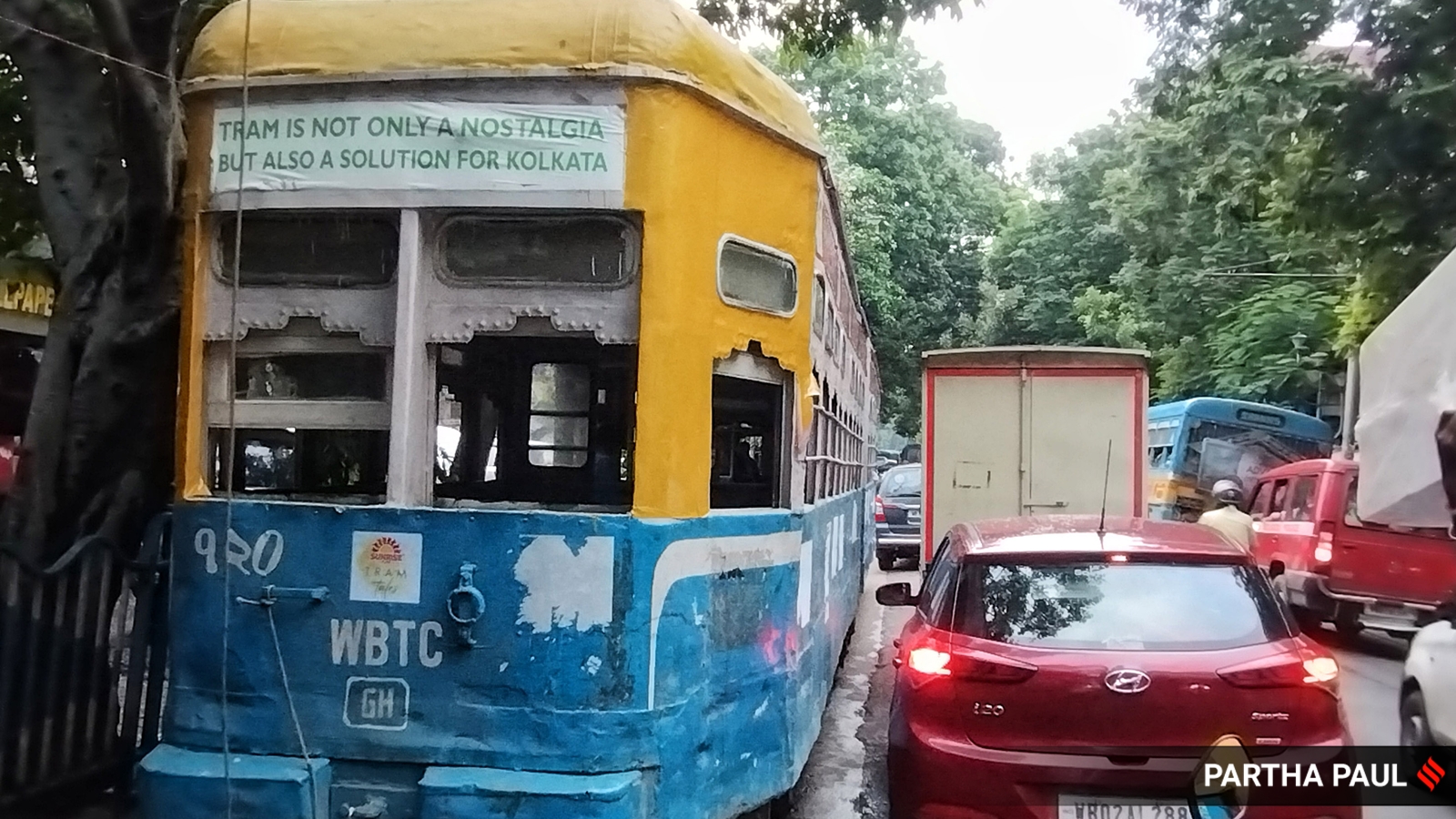The cynical joke goes that if you want to save something in Kolkata you need to find its connection to either of the city’s presiding deities — Rabindranath Tagore or Satyajit Ray. Mamata Banerjee even wanted to acquire the house in which Tagore had lived for a few months in London in 1912.
But neither Tagore nor Ray seem to be enough to save Kolkata’s trams. Tagore wrote a famous poem, ‘One Night I had a Dream’, that was part of Sahaj Path, the first book many Bengalis read. In it, the whole city is in motion. The roads slither like pythons and the trams thump along on them. Ray used the tram for the opening credit sequence in his 1963 classic Mahanagar (The Big City). His biographer Andrew Robinson wrote that those shots of the “intermittent flashing and popping of an overhead connector on a moving tram” set the “workaday mood of the story” by showing something that is “part of the fabric of Calcutta existence.”
A restored Mahanagar was just re-released by R D Bansal Productions. Ironically, as I watched it in a theatre, I also heard the Bengal government planned to get rid of trams altogether except for one little loop preserved as a touristy memento. Since then social media has been awash in the “ding-ding” tram nostalgia. This was the first city in India to get a tram. It is the last city to still have them. Now in its 151th year, it feels like the end of the line.
The arguments for and against are well-worn, like the tram tracks. Proponents of trams claim they are coming back around the world as eco-friendly modes of transportation. Opponents insist that as cars have increased exponentially, Kolkata’s streets are too congested and narrow to support lumbering trams. The Calcutta Tram Users Association points to other congested cities with streetcars, like Hong Kong. Transportation consultants say that there have been massive technological upgrades to streetcars. They are quieter, faster and more efficient.
But in a world that worships speed, whether in cars, chips or phones, who will speak up for a tram that trundles unhurriedly at its own pace? Governments like shiny new things. So they would rather invest in a fleet of electric buses and sleek metro rails. The tram feels like a colonial throwback, a streetcar named nostalgia. Even the Communist government had declared them “obsolete” in the nineties. But like a stubborn old aunt who refuses to die, trams hung on even as 50-plus routes dwindled down to two or three.
Inertia, strong unions and sentiment might have inadvertently saved Kolkata’s trams when other cities got rid of them. A smarter government could have built on that happenstance to make them part of a blueprint for a greener future. New suburban townships like Newtown could have easily been serviced by streetcars. Instead the government chose to let trams rot, hoping they would rust away into oblivion. A retired tram services employee told me that cars, bereft of maintenance and upgrades, were just moving by God’s grace. But he also claimed if they only allocated some Rs 30 crores the current fleet could still run for the next 15-20 years.
But the problem has always been lack of imagination. Raised tram-only tracks were lowered so as to not take up extra road space but no tram stops were built which meant people had to board and alight from trams in the middle of careening traffic. The very people who used the tram the most, the elderly, mothers bringing children home from school, were the ones least able to dodge two lanes of traffic to hail a tram. Then the government said trams were not generating enough business. The Calcutta Tram Users Association calls it “planned obsolescence.”
Activists are fighting it out in court and through cultural events like Tramjatras. The matter has been before a committee appointed by the High Court in 2023 whose findings are still awaited. No matter what happens there, it’s clear not everything is worth saving for nostalgia’s sake — hand-pulled rickshaws, for example. But the real tragedy here is that this was a rare case where nostalgia could have propelled the city forward instead of backwards. Trams could have been part of the future, not just a vestige of the past.
The yellowing signs inside the tram cars still read “Please tender exact fare. No change available for Rs 100 or Rs 50.” But a change in mindset is much harder to find.
Roy is a novelist and the author of Don’t Let Him Know




